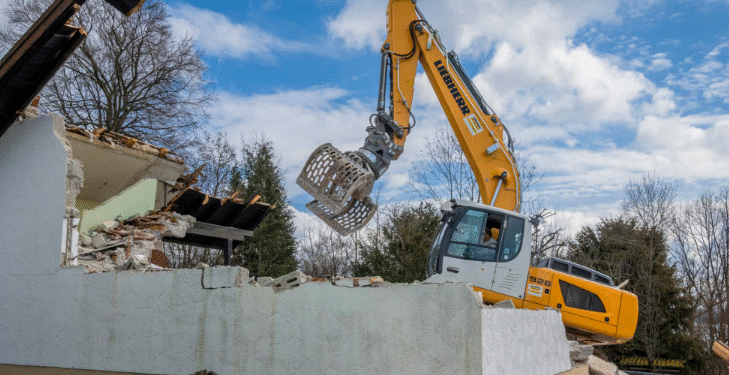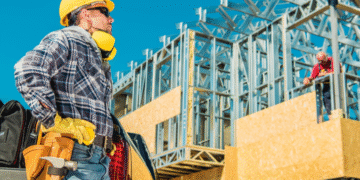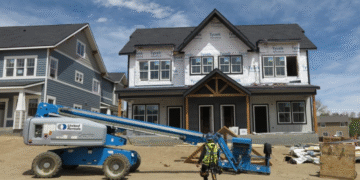Tearing down a building is a straightforward job. Knock it down, clear the rubble, and move on. But in reality, structural demolition is a highly calculated process that involves precision, planning, and expertise. When done right, it paves the way for progress. When done poorly, it can lead to chaos, safety hazards, and costly setbacks.
Whether it’s making space for a new development, removing unsafe structures, or repurposing a property, professional structural demolitions are the first and most critical step in breaking ground the right way.
Understanding Structural Demolition: More Than Just Knocking Things Down
At its core, structural demolition is about the safe and efficient removal of buildings, foundations, or structural elements. This isn’t the same as simply tearing out interiors. Structural work deals with the bones of the building beams, columns, floors, walls, and load-bearing systems. These elements are interconnected and affect the integrity of the surrounding area.
Demolition professionals must consider the materials involved, the building’s condition, and the potential impact on nearby properties, people, and the environment. From concrete high-rises to timber-framed homes, each structure requires a different strategy.
The Process Behind Professional Structural Demolitions
Initial Planning and Site Assessment
Before anything comes down, professionals conduct a thorough site evaluation. This includes:
- Assessing the building’s layout and structural integrity
- Identifying materials (like asbestos, lead, or reinforced concrete)
- Checking proximity to other structures
- Understanding underground utilities and access points
This careful assessment enables the team to design a demolition plan that minimises risk and maximises efficiency.
Obtaining Permits and Meeting Regulations
Demolitions are heavily regulated to protect public safety and the environment. Professionals handle all required permits and adhere to local regulations regarding noise, dust, debris management, and work hours. Cutting corners here can lead to legal trouble or dangerous conditions.
Utility Disconnections and Safety Measures
Before any equipment arrives, all essential utilities gas, electricity, water must be safely shut off. Safety fencing, signage, and dust suppression systems are also set up to protect workers and the surrounding community.
Demolition Execution
This is where the real action happens. Depending on the structure and location, different methods may be used:
- Mechanical demolition with excavators or bulldozers
- Deconstruction by hand in confined or delicate areas
- Controlled implosion (for large or complex structures)
Timing, precision, and experience are critical here. A poorly timed or misjudged action could damage adjacent buildings or put people at risk.
Waste Removal and Site Cleanup
Once the structure is down, the cleanup process begins. Materials such as concrete, metal, wood, and glass are sorted and either recycled or disposed of in a responsible manner. This step is often overlooked, but it’s vital for preparing the site for future construction.
Why Experience Matters in Structural Demolition
Not all demolition work is created equal. There’s a big difference between DIY knock-down jobs and professional structural demolitions. The latter involves engineering-level knowledge, environmental responsibility, and strict adherence to safety codes.
Working with professionals ensures:
- Minimal disruption to neighbors and nearby businesses
- Compliance with building codes and regulations
- Reduced environmental impact through recycling and dust suppression
- Lower risk of injury or property damage
Mistakes in structural demolition can have serious consequences. Collapsed walls, unexpected gas leaks, and structural shifts in neighbouring buildings are just a few of the risks avoided with a skilled team at the helm.
Typical Applications of Structural Demolition
Redeveloping Residential and Commercial Properties
Urban areas are constantly evolving, with old buildings making way for new developments. Structural demolitions are often used to repurpose land for modern housing, retail complexes, or public infrastructure.
Clearing Unsafe or Damaged Structures
In cases of fire, flood, or structural failure, a full or partial demolition might be necessary to ensure safety. Quick, professional action can prevent further damage and prepare the space for repair or redevelopment.
Expanding Existing Structures
Sometimes, part of a structure must be removed to allow for renovations or extensions. This might involve removing only one wing of a building or carving out space for a new foundation. Precision is essential to avoid compromising the rest of the building.
The Future Starts with a Clean Slate
Whether you’re breaking ground for a commercial tower, rebuilding after a disaster, or simply updating a tired property, the first move is clear: bring in the experts.
Professional structural demolitions create a safe, clean starting point for everything that comes next. They clear the way not only physically but also in terms of peace of mind knowing that your project begins with a solid, hazard-free foundation.
Final Thoughts
Demolition isn’t just about destruction it’s about preparation, safety, and laying the groundwork for progress. When it’s time to break ground, cutting corners is never the answer. Trusting professionals ensures that everything is done responsibly, efficiently, and with a focus on the future.
By investing in a skilled demolition team, you’re not just clearing space; you’re also creating a safer environment. You’re setting the tone for the success of your entire project. And that’s how you break ground the right way.










